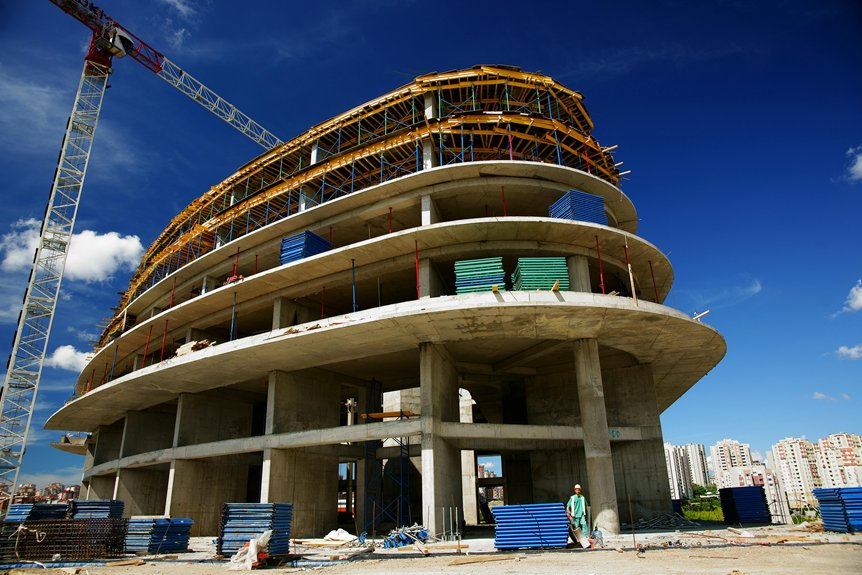Recent building materials emphasise sustainability, durability, and energy efficiency. Innovations include recycled insulation such as cellulose fibre and denim, which enhance indoor air quality and minimise waste. Advanced panels, like precast concrete and hempcrete composites, improve structural performance while reducing environmental impact. Emerging construction technologies, including 3D printing, drones, and digital twins, optimise design, accelerate processes, and diminish errors. Ongoing exploration reveals how these advancements contribute to the creation of smarter, greener, and longer-lasting buildings.
Innovative Sustainable Insulation Options
Innovative sustainable insulation options focus on minimising environmental impact while enhancing energy efficiency in buildings. These materials are crafted with consideration for both the planet and its inhabitants. For instance, cellulose fibre insulation, derived from recycled paper, not only provides fire resistance but also aids in the regulation of indoor air quality. Ecocel, produced from recycled paper, exemplifies how recycled materials can be effectively repurposed in construction. Sheep’s wool stands out as another eco-friendly option; it naturally absorbs moisture, helping to maintain temperature and humidity levels. Aerogel, often referred to as a “super-insulator,” delivers remarkable thermal resistance, making it suitable for a variety of building types. Recycled denim insulation merges soundproofing qualities with sustainability, while hemp insulation is both renewable and breathable, effectively resisting pests. These materials typically boast low carbon footprints, promote healthier indoor environments, and support circular economy practices, bringing communities closer to sustainable living. They enable individuals to create smarter, greener homes that they can take pride in.
Advances in Construction Panels and Composites
Recent advances in construction panels and composites have significantly improved building efficiency and sustainability in the UK.
Innovative materials such as straw panels, derived from renewable resources, present eco-friendly alternatives for sustainable construction practices. Corkboard insulation and bio-based materials like Gramitherm grass fibres enhance thermal performance while minimising water consumption.
Precast insulated panels, reinforced with advanced insulation like polyurethane foam, further optimise energy efficiency in buildings.
Additionally, composites such as hempcrete offer natural, carbon-negative insulation solutions, while mycelium-based materials are both biodegradable and fire-resistant.
The innovations extend to panel technology, with precast concrete being enhanced by weather-resistant coatings and modular solutions that expedite construction processes and diminish waste.
Furthermore, these new materials often feature improved durability and resistance to environmental degradation, extending the lifespan of structures and reducing maintenance costs.
These advancements support environmentally responsible building practices and contribute to the creation of structures that are durable, efficient, and more in harmony with nature.
Emerging Technologies in Building Construction
Emerging technologies are revolutionising the construction industry by enhancing building processes to be faster, safer, and more efficient. Artificial intelligence and machine learning play a pivotal role in project management, analysing data to predict delays, optimise resources, and minimise errors.
Drones and robotics contribute significantly to site safety and productivity by performing surveying, inspections, and repetitive tasks with increased accuracy. Meanwhile, wearable technology ensures that workers remain protected and connected, thereby reducing the risk of injuries and improving communication on-site.
The advent of digital twins and Building Information Modelling (BIM) allows for virtual modelling, enabling better planning, simulation, and collaboration among all stakeholders involved in a project. Additionally, 3D printing is facilitating the rapid creation of complex structures, which not only lowers costs but also diminishes environmental impact.
These technological advancements are fostering a greater sense of belonging among workers and communities, as progress becomes safer, more sustainable, and more inclusive.
| Technology | Benefit | Application |
|---|---|---|
| AI & Machine Learning | Predicts delays, optimises resources, reduces errors | Project management, risk assessment |
| Drones & Robotics | Increases safety, improves accuracy, automates tasks | Inspections, material transport, surveying |
| Wearables | Protects workers, enhances communication | Safety alerts, real-time updates |
As the construction landscape continues to evolve, embracing these innovations will be crucial for industry professionals striving for excellence in their projects.
Conclusion
Recent developments in building materials emphasise sustainability, durability, and innovation. New insulation solutions are designed to reduce energy consumption, while advanced panels and composites enhance strength and versatility. Emerging technologies in construction streamline processes, boost efficiency, and lower costs.
These advancements contribute to creating modern buildings that are environmentally friendly, resilient, and adaptable to future requirements.
Staying informed about these materials is essential for constructing smarter, greener, and more durable structures that meet the demands of today’s world.

